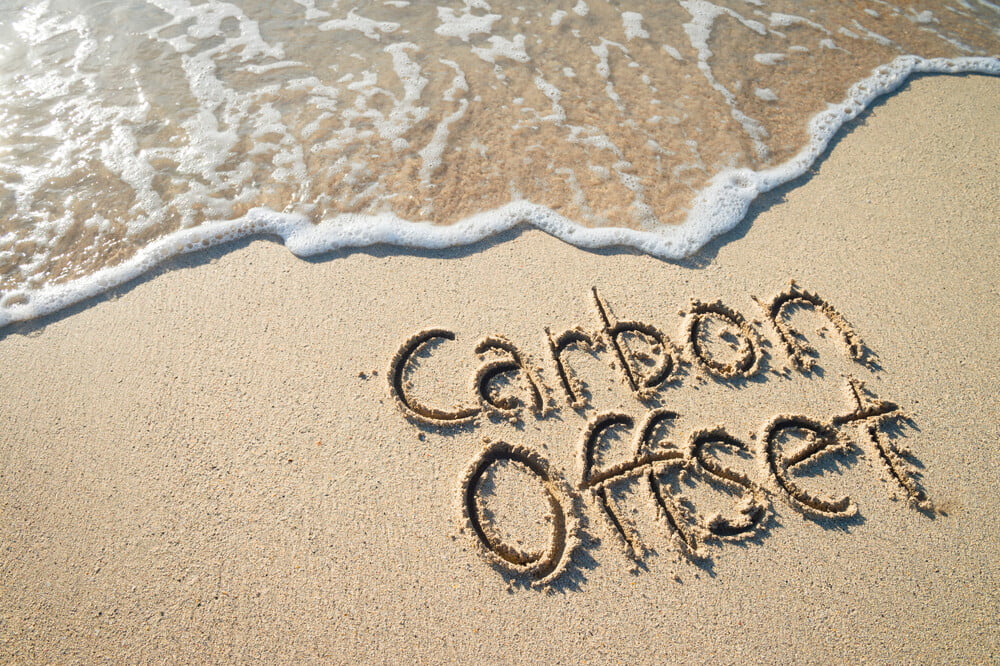

Environment
Finding High-Quality Carbon Offsets for Your Green Business
Many companies are discovering the importance of going green. Recent polls have shown that around 70% of customers claim that they believe companies should embrace sustainability, so smart businesses are taking the right steps to move in that direction.
Buying carbon offsets can truly help companies compensate for their emissions in line with science-based targets to limit global warming.
They allow companies to reach their carbon cutting targets by investing in environmental projects around the world. But finding high-quality offsets can be challenging. When it comes to choosing the best offset provider, it pays to do your research. There are a number of steps you can take to help choose offsets with the biggest impact.
From understanding the acronyms and language used in the carbon market, to trusting your offset provider and getting to know the different types of offsets available. You can learn how airlines use carbon offsets, as well as many other indjustries. This article breaks down everything you need to know to meet carbon cutting targets.
What are carbon offsets?
Let’s start with the basics. All businesses generate carbon emissions, releasing greenhouse gases (GHG) like carbon dioxide and methane into the atmosphere. This might be from using fossil fuel-based energy to power operations, known as direct emissions. Or if could be from indirect emissions like supply chain transport or sourcing raw materials for products.
Companies can and should make their operations more efficient to limit their carbon emissions. According to WWF’s Corporate Climate Mitigation Blueprint ,companies should count and disclose their emissions, and make an actionable plan to reduce emissions in line with Science-based targets (SbT) as their first climate action.
After this, in most cases, they won’t be able to completely cut out all emissions.
This is where carbon offsets are needed.
Carbon offsets act as a kind of sponge to soak up any unavoidable emissions generated by companies, organizations or individuals. They are a tool to compensate for these emissions by financing environment and clean energy projects designed to avoid carbon emissions, or remove them from the atmosphere.
Each carbon offset (also called carbon credits) represents one ton of atmospheric CO2 emissions, and every offset can only be sold once. This helps ensure that offset projects aren’t double counting their carbon emissions reductions and gives companies confidence that they are genuinely investing in their net zero goals.
But there’s a lot more to it than that. The carbon market is diverse and can be difficult to understand. Due diligence is needed to make sure you’re buying the best, high-quality carbon offsets that truly reduce your overall emissions.
High-quality carbon offsets
When taking your car to the mechanic, it’s always best to know a bit about how cars work to help you understand the fix. The same is true for understanding the carbon market to find the right offset investment.
There are a couple of terms you will need to become familiar with to help you with this.
Firstly, there’s the term permanence. When carbon dioxide enters the atmosphere, it stays there for hundreds of years. To adequately balance this out with offsets, you need to be assured of the longevity of the carbon removal or avoidance. High-quality carbon offsets should sequester, avoid or remove carbon for a long time to be truly effective. It should be ring-fenced to compensate for a certain amount of carbon for a certain amount of time – ideally a number of decades or a century.
For example, If you’re considering carbon offsetting with regenerative farming, you will need to be assured that the farmland will not change ownership, or be repurposed, for a certain amount of years to protect the value of the carbon offset.
The next term you’re likely to come across is additionality. Essentially this means that a project or activity to reduce atmospheric GHGs would not have happened without the carbon offset investment. This can be difficult to know for certain, as carbon credits are only issued after they have delivered measurable GHG reductions. A good way to look at this is by asking yourself ‘would this project have gone ahead outside of the carbon market?’
Some offsets do generate additional revenue for the project developer – such as clean energy infrastructure. So, there’s a possible element of additionality, meaning the project may have found investment elsewhere to generate returns, and doesn’t solely exist for the benefit of the climate.
It’s important to invest in offsets that are not additional and trust that your money is a genuine contribution towards reducing emissions.
Now that you know the basic principles of offsetting, you can start to assess their quality by the main industry standards.
Strong, independent standards
The price of carbon offsets varies and is not a reliable way to measure their quality. The first thing to look for are offsets that adhere to strong, independent standards.
There are a number of organizations that certify these standards in the voluntary carbon market, and they act as a regulatory and monitoring body for offset project developers, to verify the legitimacy and effectiveness of their project. The Carbon Credit Guidance for Buyers, published by World Wildlife Fund (WWF-US), Environmental Defense Fund (EDF) and Oeko-Institut, identifies the ‘strength of the institutional arrangements and process of the crediting program as a cornerstone of high-quality offsets.
From a buyer perspective, this means that the offset project meets the standards of overall program governance, undergoes robust third-party auditing, and meets transparency and stakeholder consultation requirements.
Here’s an example of this type of organizational structure:
Verra is a global organization that develops and manages carbon offset programs. Among these is the Voluntary Carbon Standard (VCS), the most widely used voluntary GHG program in the world. Verra oversees all the project within VCS to manage and ensure they meet the institutional standards set out above.
Under the VCS, developers can set out projects to protect forests from logging, mining and agriculture. This might mean implementing measures to prevent wild fires, hiring community members to guard the forest or working with farmers to enhance agricultural productivity and alleviate pressure on the forest ecology. By adhering to the VCS program, managed by Verra, these action can be translated into tradable carbon credits.
This also adheres to the Carbon Credit Guidance for Buyers standard of going beyond simply reducing emissions and generating additional benefits, by protecting the communities most vulnerable to the effects of climate change, like forest fires.
Beyond emissions reductions
The latest industry reports show that the voluntary carbon market is growing. Naturally this will see a more diverse range of projects being developed and increased competition.
An important factor to keep in mind is that different types of offsets have different benefits and impacts.
Look for projects that have impacts beyond avoiding or removing carbon emissions, like social and economic benefits. For example, projects under the UN environment’s programme’s REDD+ framework combat deforestation and forest degradation. Yet these initiative have additional benefits such as employment for local communities, or protection of indigenous people and endemic species that rely on the forests.
Ultimately, the global strategy to reach net zero is one that will involve sourcing and investing in truly high-quality carbon offsets. Finding offsets that go beyond science-based targets to deliver economic and social benefits, ensures companies get the most impact for their investment.


 Environment10 months ago
Environment10 months agoAre Polymer Banknotes: an Eco-Friendly Trend or a Groundswell?

 Environment12 months ago
Environment12 months agoEco-Friendly Home Improvements: Top 7 Upgrades for 2025

 Features9 months ago
Features9 months agoEco-Friendly Cryptocurrencies: Sustainable Investment Choices

 Features10 months ago
Features10 months agoEco-Friendly Crypto Traders Must Find the Right Exchange





























